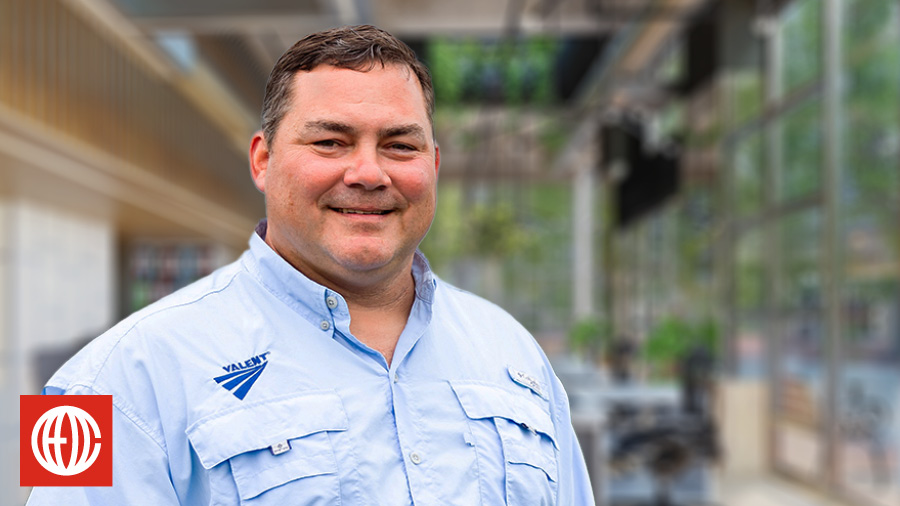
Guest: Jamil Nizam is the CEO of Waldom Electronics and Chris Lauret is the COO. Jamil is also an entrepreneur coaching client at CEO Coaching International.
Episode in a Tweet: A first-class onboarding process will make a BIG first impression on your new team member.
Quick Background: Most companies have it backward. They celebrate when someone leaves the company instead of when they join.
On today’s show, Jamil Nizam explains how his first-class onboarding process eased new COO Chris Lauret into his responsibilities while also giving him a new perspective on just what kind of company he was working for. Chris and Jamil also discuss how they coordinate and execute key tasks remotely so that BIG keeps happening, even at a distance.
Keys to Effortless Onboarding From Jamil Nizam and Chris Lauret
1. Make the most of the time between signing and start date.
“I got to thinking that the time between when somebody accepts a job and their first day is a big area of void,” says Jamil. “On day two, my goal was that Chris felt like he had already been working with us for three or four months.”
Jamil’s recruiting process, which he describes as “slow and thoughtful,” played a roll in bringing Chris up to speed. Chris says, “That period of time allowed me to interface with Jamil and the team on multiple occasions, in different environments. And then Jamil also offered up his own entrepreneur coach as someone to talk with me for about an hour. And that gave a lot of good insight on Jamil, the family, and how the privately held company operated coming from a publicly held company.”
Jamil understood that there’s a BIG difference between wanting to make a key C-suite hire and trying to make one as fast as possible. Because Jamil took his time to find the right candidate, Chris had time to understand the CEO’s expectations for both the business and his role in advancing it.
“I think the other piece was sharing information regarding the financials and how the business ran,” Chris says. “Upon my departure from my prior employer, Jamil shared this large document with me that had everything you could imagine: financials, letters, the programs that existed. And the three weeks I had off before starting my new position really gave me a chance to digest that information.”
2. Small gestures and attention to detail make a big difference.
From the time Chris accepted to his first day, Jamil and his team had six weeks to make sure that Chris’ office would be ready for action the moment he walked in.
“I just wanted to manage the process,” Jamil says. “I just went through and I asked myself, what would I want as a new hire? So I had a checklist of the things I wanted to do prior to day one and then I assigned an owner for each item and managed the process.”
Jamil Nizam: On day two, my goal was that Chris felt like he had already been working with us for three or four months. Jamil’s IT and HR departments talked to Chris about nuts-and-bolts things like making sure Chris’s business cards, computer, company cell phone, and paperwork were all taken care of. Jamil also established a weekly communication rhythm with Chris via emails and phone chats and solicited ideas from the rest of his team on how to make the onboarding process more welcoming.
Jamil remembers, “One of our team members said, ‘Why don’t we send Chris some Waldom swag?’ We sent a coffee mug and a sweater and a shirt. We also talked about making the announcements. And we came up with an internal announcement process, so we honored our team members hearing it first. And Chris got to see the announcements prior to going public and provide any input. We just wanted to make sure the announcements were accurate and felt right.”
Meanwhile, Chis was using the information Jamil provided to make some plans of his own.
“I really embraced the information that Jamil had shared with me,” Chris says. “Jamil challenged me and said, ‘Let’s come up with a 30, 60, 90-day plan.’ And my personality is all around planning and the checklist and so for me that helped really get my mindset on, what do I really need to do? And as I was going through that information, I picked up topics in areas I needed to focus on.”
3. Take a long-term approach to this new relationship.
After his deliberate hiring process, Jamil already felt confident that Chris was going to fit in with his company’s culture. One last request really sealed the deal: Chris wanted to take an extra five weeks to finish up the quarter with his current employer.
“I viewed that as a really good sign,” Jamil says. “He wanted to fulfill his obligations and exit in a professional way and I totally supported that. And I shared with him that, ‘I’m hiring you for the long term, so whether you join me in two weeks or five weeks or eight weeks, it doesn’t matter to me. Let’s do it right and do it systematically. So I was happy to support him, but I also thought it reinforced what I viewed as Chris’ integrity and character that he wanted to exit the company in a professional way.”
Chris Lauret: I think Jamil has empowered me to run his organization.
Chris was equally impressed with the reception he and his wife received on his first day, including his and hers Montblanc pens and a handwritten note from the CEO.
“I didn’t know what Jamil was going to do when I started,” says Chris. “In my past life, just on the tactical onboarding, we celebrated when people left organizations and didn’t celebrate when people started. And so for 20 years I’ve probably been doing it incorrectly. That was a great learning moment for myself: name in lights, balloons, cards, it already made a huge difference on the onboarding process. I still have Jamil’s card here at my desk, ‘These are to sign big deals, for big things to happen.’ And so that’s what I’m here to do.”
Jamil’s next step was the one that’s often hardest for CEOs: getting out of the way and letting top talent do what you hired them to do. From his office in Los Angeles, Jamil had to figure out how to stay involved with Chris’ Rockford, IL office without micromanaging its every move.
“I wanted to see what Chris could do on his own,” Jamil says. “And he came up with a really strong first hundred day plan. What I loved was page one which was a little bit about Chris personally. So this was day one, Chris sharing, being a little vulnerable and talking about what the first hundred days looked like, so everyone knew exactly what to expect. So for me it was easy. We already had the first hundred days planned out and what Chris and I decided to do was have a 15-minute check-in every day for the first 30 days. So we had a standing call at 2:00 PM west coast time, 4:00 PM Rockford time, quick 15-minute check-in.”
“I think Jamil has empowered me to run his organization,” Chris says. “Our communication is on Zoom, it’s on a phone call, Jamil will buzz an email, will send a text message or even a picture or just some numbers on what’s going on, how did we do for the month. And I think those little touch points have all made it really simple. But I think that empowerment is probably even a stronger element, that Jamil trusts me to do the right thing. And I trust him that he’s going to help me do the right thing.”
Top Takeaways
- Slow down. Rushing into a C-suite hire usually creates more problems than it solves.
- Run down your onboarding checklist. Your new COO shouldn’t have to waste time figuring out his company email password.
- Roll out the (virtual?) red carpet. Even if you’re not sharing office space, find ways to make your new hire’s first day memorable.
About CEO Coaching International
CEO Coaching International works with CEOs and their leadership teams to achieve extraordinary results quarter after quarter, year after year. Known globally for its success in coaching growth-focused entrepreneurs to meaningful exits, CEO Coaching International has coached more than 1,000 CEOs and entrepreneurs in more than 60 countries and 45 industries. The coaches at CEO Coaching International are former CEOs, presidents, or executives who have made BIG happen. The firm’s coaches have led double-digit sales and profit growth in businesses ranging in size from startups to over $10 billion, and many are founders that have led their companies through successful eight, nine, and ten-figure exits. Companies working with CEO Coaching International for two years or more have experienced an average revenue CAGR of 31% (2.6X the U.S. average) and an average EBITDA CAGR of 52.3% (more than 5X the U.S. average).
Learn more about executive coaching | Meet our world-class coaches








